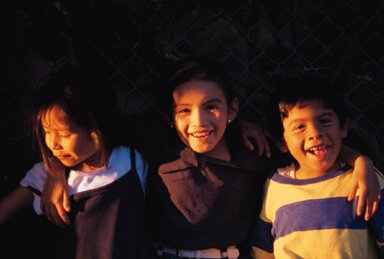In this area of the website are professional learning materials prepared by an educational psychologist with a specialization in trauma-informed practice are being made available here.
Jan 13 2015 Attachment in the Classroom – Students with Refugee Backgrounds Final
Building Connections to Support Social and Emotional Development Key Messages of Safety and Caring
Cues and Strategies: Fear and What We Can Do
Loss, Grief, Stress and Trauma: An Introduction
Tips for Communicating: Meeting with Parents
Calming Repertoire: Teacher Inventory
Early Warning Stress Systems: Teacher Inventory
Trigger Thoughts and Antidotes: Teacher Self-Care When to Refer for Counselling
Putting Social Emotional Supports into Place
Sample Threats Sample Triggers
Somatosensory Softening the Brain for Learning
The Zones of Regulation is a classroom-based curriculum that supports student readiness-to-learn. This empowering program can be tailored for individuals, can be used for whole classrooms, or generalized as a whole-school approach. The material assists students who are challenged with sensory and/or emotional regulation, and focusses on student responsibility for getting into the expected “zone.” Due to its highly visual, low language demands, the zone can be easily adapted for students with refugee backgrounds. Access the website for free materials.

* Note: Some of these reference resources were accessed for the preliminary literature review in 2011.
Some links may no longer be active.
Arnot, M., Pinson, H. & M. Candappa. (2009). Compassion, caring and justice: teachers’ strategies to maintain moral integrity in the face of national hostility to the “non-citizen”. Educational Review 61 (3), 249-264.
Back to School: Challenges and Strengths of Refugee Students (2003). Bridging Refugee Youth and Childrens’ Services. Retrieved from http://www.brycs.org/documents/upload/brycs_spotsept.pdf
Bailey, B. (2001). Conscious Discipline: Seven basic skills for brain smart classroom management. Loving Guidance, USA.
Bailey, B. (2010). Fostering Self-regulation in all children. Conscious Discipline. Retrieved from http://consciousdiscipline.com
Billot, J., Goddard, T., & N. Cranston. (2007). How Principals Manage Ethnocultural Diversity: Learning from three countries. Journal of the Commonwealth Council for Educational Administration & Principal Leadership Magazine, Vol. 4, Number 7. Retrieved from http://people.ucalgary.ca/~goddard/pdf/iseapaper_published2007.pdf
Bridget K. Hamre and Robert C. Pianta. (2006). “Student-Teacher Relationships.” In Children’s Needs III: Development , prevention and intervention, Ed. G. Bear and Kathleen M. Minke. National Association of School Psychologists, Bethesda, MD.
British Columbia Ministry of Education (2009). Students from Refugee Backgrounds: A guide for teachers and schools. Retrieved from http://www.bced.gov.bc.ca/esl/refugees_teachers_guide.pdf
Bratherton, Anita. Principles of Engaging Asylum Seeker and Refugee Parents in their Child’s Learning. National Children’s Bureau. Retrieved from http://www.ncb.org.uk/dotpdf/open_access_2/asylum_final.pdf
Calgary Board of Education (2011). CELLS: Complex English Language Learners. In-house. Calgary Board of Education, Calgary, Alberta.
The Centre for Victims of Torture (2000). Responding To Spontaneous Disclosure of Trauma: In situations where you are not in a therapeutic role. Retrieved from http://cvt.hutman.net/files/pg110/Responding%20To%20Spontaneous%20Disclosure%20of%20Trauma.pdf
Chovil, N. (2009). Engaging Families in Child & Youth Mental Health: A Review of Best, Emerging and Promising Practices The F.O.R.C.E. Society for Kids’ Mental Health. Retrieved from http://heretohelp.bc.ca/sites/default/files/images/FamilyEngagement_LitRev.pdf
Doran-Myers, D. & S. Davies (2011). School-Based Services for Traumatized Refugee Children. NASP Communique, vol 39. No. 5, January/February 2011.
Eckman, P. (1999). Basic Emotions. In T. Dalgleish and M. Power (Eds.). Handbook of Cognition and Emotion. Sussex, U.K.: John Wiley & Sons, Ltd.
Eckman, P. (1993). Facial Expression and Emotion. American Psychologist Vol. 48, No. 4, 384-392.
Elizalde-Utnick, Graciela (2010). Immigrant Families: Strategies for School Support. Principal Leadership. Retrieved from http://www.nasponline.org/resources/principals/Immigrant_FamiliesJan10_NASSP.pdf
Fazel, M. & A. Stein (2002). The mental health of refugee children. Archives of Disease in Childhood 87, 366-370.
Fullilov (1996). Psychiatric implications of displacement: Contributions from the psychology of place. The American Journal of Psychiatry, 153(12), pp.1516-1524
Green, T. (2008). Taking Strides to Make a Difference for Immigrant and Refugee Students at Schools. Presented at National Association of School Psychologists, New Orleans, Feb. 2008.
Hamilton, R., Anderson, A., Frater-Mathiesen, K, Loewen, S, Moore, D. (2005). Interventions for Refugee Children in New Zealand Schools: Models, Methods, and Best Practice. Report to the New Zealand Ministry of Education. Retrieved from http://www.educationcounts.govt.nz/publications/schooling/5463
Kanu, Y. (2008). Educational Needs and Barriers for African Refugee Students in Manitoba. Canadian Journal of Education 31 (4), 915-940. Retrieved from http://www.csse-scee.ca/CJE/Articles/FullText/CJE31-4/CJE31-4-Kanu.pdf
Klotz, Mary Beth (2006). Culturally Competent Schools: Guidelines for Secondary School Principals. Principal Leadership. Retrieved from http://www.nasponline.org/resources/principals/Culturally%20Competent%20Schools%20NASSP.pdf
Kugler, K.E. and O.A. Price (2009). Helping Immigrant and Refugee Students Succeed: It’s Not Just What Happens in the Classroom. Centre for Health and Health Care in the Schools.
Lanktree, C. & J. Briere (2011). Integrative Treatment of Complex Trauma for Children (ITCT-C): A Guide for the Treatment of Multiply-Traumatized Children Aged Eight to Twelve Years. Child and Adolescent Trauma Program National Child Traumatic Stress Network. Retrieved from http://www.johnbriere.com/Child%20Trauma%20Tx%20Manual%20(LC%20PDF).pdf
Miller, K., H. Kushner, J. McCall, Z. Martell, M. Kulkarni (2009). Growing Up in Exile: Psychosocial Challenges Facing Refugee Youth in the United States. Ed. Jason Hart, Berghagn Books.
Minnesota Search Institute (1998-99) Best Practice Briefs: The Assets / Strength-Based Approach to Programming. Retrieved from http://outreach.msu.edu/bpbriefs/issues/brief2.pdf
The National Child Traumatic Stress Network. (2003). Complex Trauma in Children and Adolescents. Retrieved from http://www.nctsnet.org/sites/default/files/assets/pdfs/ComplexTrauma_All.pdf
The National Child Traumatic Stress Network (2005). Mental Health Interventions for Refugee Children in Resettlement White Paper II. Retrieved from http://www.nctsnet.org/sites/default/files/assets/pdfs/MH_Interventions_for_Refugee_Children.pdf
Perry, Bruce. Abuse and Neglect. Attachment. Trauma and PTSD. Neurosequential Model. Brain Development and Neuroscience. Child Trauma Academy.
Perry, B. and M. Szalavitz (2007). The Boy Who Was Raised as a Dog And Other Stories From a Child Psychiatrist’s Notebook: What Traumatized Children Can Teach Us About Loss, Love, and Healing. Basic Books.
Perry, B (2011). A Day with Bruce Perry. Conference, Calgary Alberta. May 10, 2011.
Prochaska, J.O; DiClemente, CC. The transtheoretical approach: crossing traditional boundaries of therapy. Homewood, IL: Dow Jones-Irwin; 1984.
Rando, T.A. (1993). Treatment of Complicated Mourning . Champaign, IL: Research Press.
Sarr, C.U and J. Mosselson (2010). Issues in Teaching Refugees in US Schools. Yearbook of the National Society for the Study of Education, v. 109 no 2, p. 548-570.
Sutherland, E. (2011). Telephone Interview, Calgary Alberta. March 2011.
Sutherland, E. (2005). Refugee Children and Families: A model for successful integration. Edna Sutherland and Associates/ Calgary Catholic Immigration Society, Calgary, AB.
Vargas, C. M. (2007). War Trauma in Refugees: Red Flags and Clinical Principals. Visions: BC’s Mental Health and Addictions Journal 3 (3)12-13. Retrieved from http://heretohelp.bc.ca/publications/visions/trauma-victimization/bck7
Victorian Settlement Planning Committee (2005). The Good Practice Principles Guide for Working with Refugee Young People. Department for Victorian Communities, Melbourne, Victoria, Australia.
Woods, A. (2009). Learning to be Literate: Issues of pedagogy for recently arrived refugee youth in Australia. Critical Inquiry in Language Studies 6 (1-2) 82-101.



